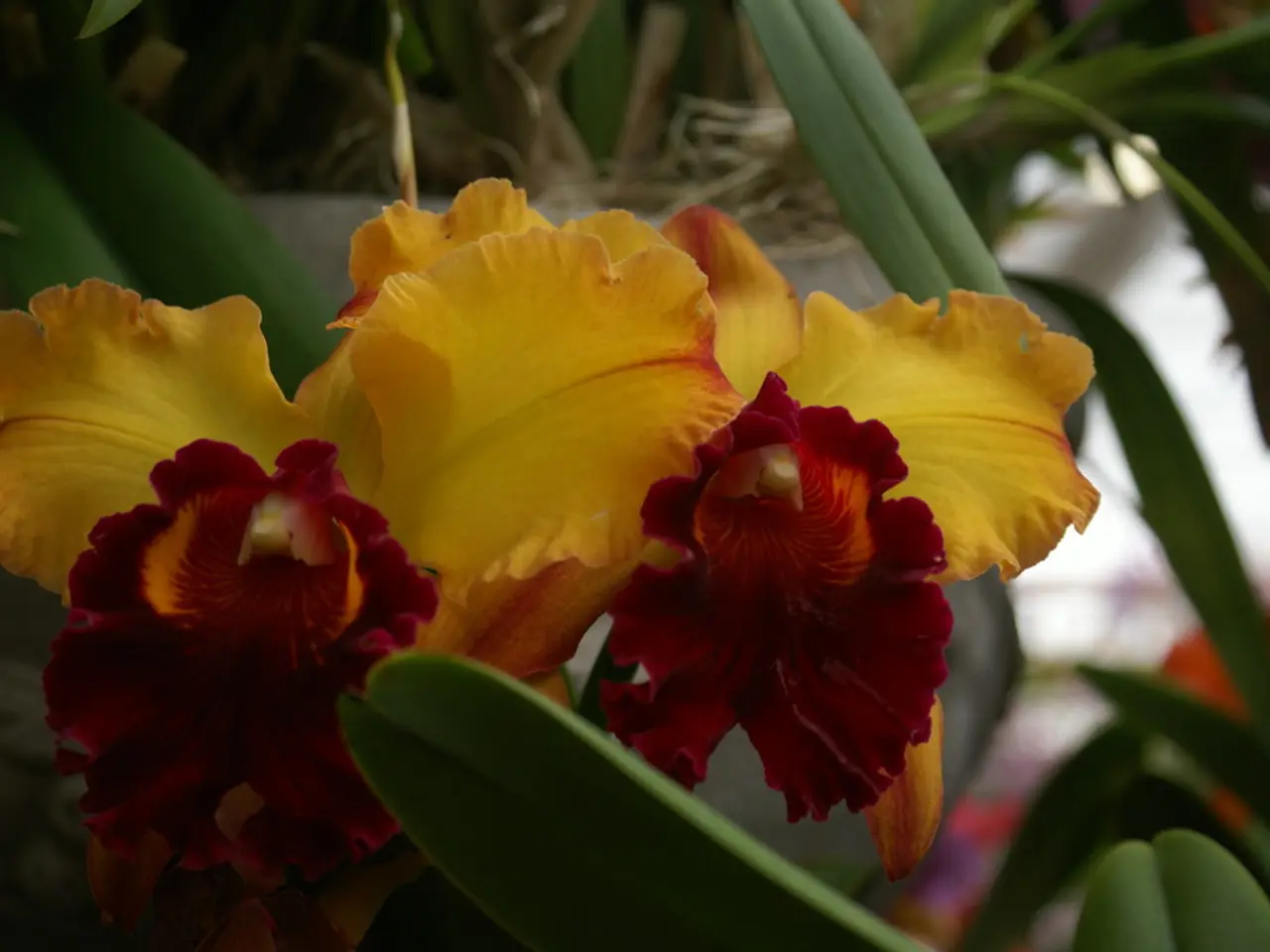Harvest and Divide Your Perennial Plants in September to Increase Spring Growth Count
In the autumnal hues of the garden, a crucial task awaits the keen gardener: dividing perennials. This form of plant propagation ensures a bountiful display of blooms in the spring.
Iris plants, for instance, benefit greatly from this process. By dividing them in fall, gardeners can encourage healthier growth and more vibrant spring blooms. To divide an iris, dig up the plant, roots and all, using a shovel. Separate the rootball clump into two or more pieces and replant.
Other perennials that thrive with division include Salvia, a reliable flowering perennial known for its fast growth and spreading nature. Salvia should be divided every few years to maintain their vigour. Asters, with their stunning autumn blooms, also benefit from division. They should be divided every three or four years, discarding the oldest rhizomes and replanting the young, healthy sections shallowly.
Cranesbill, or Hardy Geraniums, are another tough perennial that grows in clumps. They should be divided when they are done flowering in the fall. Daylilies can also be rejuvenated by dividing them in fall, with each division containing three fans of leaves and ample roots.
Perennials like Peonies and Hostas should also be divided in fall. Peonies should contain at least three buds in each division, while Hostas, growing quickly, should be divided every three or four years when they develop dead centers in their crowns.
Coral bells, when overcrowded, can be divided in fall. The clump should be divided into two to four sections and replanted in prepared planting sites.
When dividing perennials, it's best to wait for cooler weather and water the soil thoroughly the day before. The ideal time for division is around four weeks before the first hard frost, when the weather is cool but not cold. After transplanting divided perennials, water well and keep the soil moist until the first freeze.
This process not only ensures better blooms in spring but also makes room for new growth. Asters, for example, when divided in early autumn and replanted at their original site, can continue to bloom throughout the following season, ensuring a continuous display of colour in the garden.
So, as the leaves turn golden and the days grow shorter, remember to prepare your perennials for a vibrant spring. Divide, transplant, and water, and watch as your garden comes alive with colour once more.
Read also:
- Top 10 Austin-Based Advertising Firms Worth Exploring
- Comprehensive Guide to Electric Vehicle Infotainment: Nearly all key aspects covered regarding in-vehicle entertainment systems for electric vehicles
- Education Exhibition: August 2024 Display and Demonstration
- Enhanced solar power for 600-watt power stations: the BOOSTER unit offers an upgrade.




